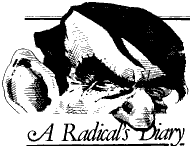Early Hitler
works found in Iran FROM ROGER BOYES IN BERLIN TWO previously unknown
watercolours apparently by Adolf Hitler have
been found in Iran, adding to the Führer's
substantial oeuvre of mediocre town portraits and
landscapes. The signed pictures showing monuments and
buildings in Vienna were said to have been
presented by the Nazi leader to Hassan
Esfandiari, the Iranian Ambassador in Berlin,
in gratitude for Tehran's support of the German
cause. The signature, A. Hitler, has been written
differently in each painting. The frames carry the
words "Adolf Hitler, 20.4.1889 to 30.4.1945". The two pictures, which each measure about 24in
by 20in, are believed to have been painted in
Vienna in 1911 or 1912, when Hitler was in his
early twenties and dreaming of a career as an
artist. The Iranian news agency
INRA reported that the paintings are the
property of the Bonyad Montazana Foundation,
which administers estates confiscated after the
overthrow of the Shah. The agency said yesterday
that the paintings had been authenticated by two
Western experts. It is unlikely that the works would fetch more
than a few thousand pounds at auction, but they
could, however, contribute to an historical rather
than an aesthetic debate about Hitler as a young
man. His paintings of Vienna - usually copied from
photographs - were done, as he himself admitted, in
the spirit of "a confectioner composing a cake for
a customer or as a baker prepares his rolls for
somebody else's breakfast". Hitler twice failed entry examinations for the
Academy of Fine Arts in Vienna, and his work was
sold to order to gallery owners whose interest was
in the ornate golden frames rather than the drab
pictures. Hitler's rendering of
Vienna's Rotunda Tourists and furniture shops also bought his
work, which was peddled by his friend Reinhold
Hanisch. Both men were able to live on the
proceeds of sales of Hitler's work and Hanisch
urged Hitler to paint a picture a day in order to
meet their costs. When Hitler came to power he was
praised as a great painter, and his work sold for
high prices to the Nazi faithful. Hanisch, who later fell out with Hitler, tried
to sell faked Hitler paintings in the early 1930s:
the Führer's work is remarkably easy to
imitate. Hanisch and others who were involved in
selling Hitler's paintings subsequently died while
under arrest. Some of those who lived in the Vienna working
men's hostel in which Hitler stayed claim that the
future dictator was himself a forger, baking
paintings to give them the look of aged, valuable
works. Historians are fascinated by the dynamics of the
rather murky chapter of Hitler's life in the Vienna
hostel since the period of his painting may have
coincided with the formulation of his anti-Semitic
prejudices.

DAVID IRVING comments: if I were
wealthy, I would put my chequebook
away. Hitler never, but
NEVER,
gave his paintings away, least of all
to diplomats whom he might have wanted
to impress. He expressed himself
wittily in conversation in 1944 with
Heinrich Hoffmann, his
photographer (a verbatim note exists of
their talk) about people who were
offering large sums of money for his
artistic products.
|
|